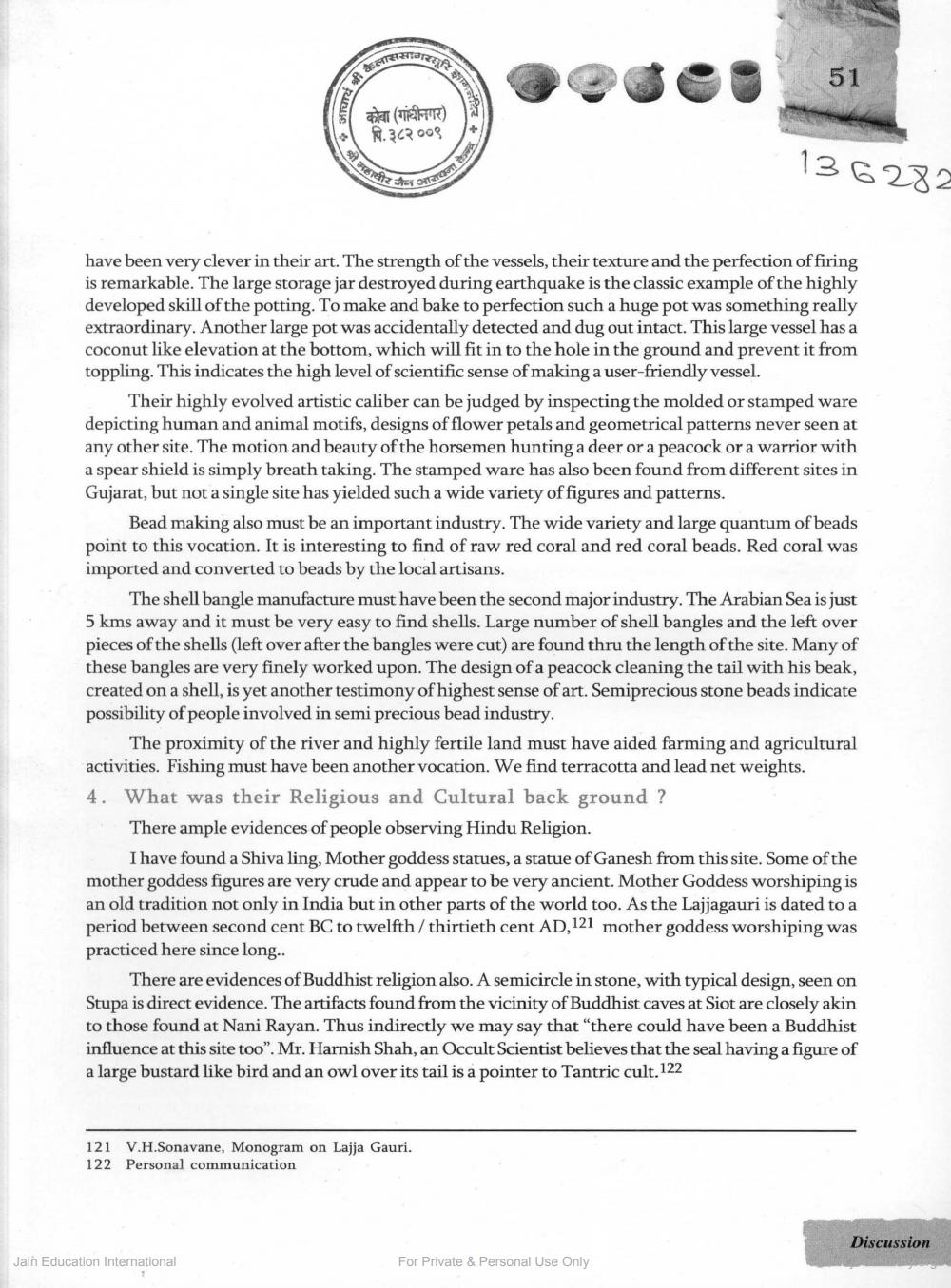________________
गरतारे
कैलास
20
51
51
Air
22
कोवा (गांधीनगर) पि.३८२००९
136282
have been very clever in their art. The strength of the vessels, their texture and the perfection of firing is remarkable. The large storage jar destroyed during earthquake is the classic example of the highly developed skill of the potting. To make and bake to perfection such a huge pot was something really extraordinary. Another large pot was accidentally detected and dug out intact. This large vessel has a coconut like elevation at the bottom, which will fit in to the hole in the ground and prevent it from toppling. This indicates the high level of scientific sense of making a user-friendly vessel.
Their highly evolved artistic caliber can be judged by inspecting the molded or stamped ware depicting human and animal motifs, designs of flower petals and geometrical patterns never seen at any other site. The motion and beauty of the horsemen hunting a deer or a peacock or a warrior with a spear shield is simply breath taking. The stamped ware has also been found from different sites in Gujarat, but not a single site has yielded such a wide variety of figures and patterns.
Bead making also must be an important industry. The wide variety and large quantum of beads point to this vocation. It is interesting to find of raw red coral and red coral beads. Red coral was imported and converted to beads by the local artisans.
The shell bangle manufacture must have been the second major industry. The Arabian Sea is just 5 kms away and it must be very easy to find shells. Large number of shell bangles and the left over pieces of the shells (left over after the bangles were cut) are found thru the length of the site. Many of these bangles are very finely worked upon. The design of a peacock cleaning the tail with his beak, created on a shell, is yet another testimony of highest sense of art. Semiprecious stone beads indicate possibility of people involved in semi precious bead industry.
The proximity of the river and highly fertile land must have aided farming and agricultural activities. Fishing must have been another vocation. We find terracotta and lead net weights. 4. What was their Religious and Cultural back ground ?
There ample evidences of people observing Hindu Religion.
I have found a Shiva ling, Mother goddess statues, a statue of Ganesh from this site. Some of the mother goddess figures are very crude and appear to be very ancient. Mother Goddess worshiping is an old tradition not only in India but in other parts of the world too. As the Lajjagauri is dated to a period between second cent BC to twelfth/thirtieth cent AD,121 mother goddess worshiping was practiced here since long..
There are evidences of Buddhist religion also. A semicircle in stone, with typical design, seen on Stupa is direct evidence. The artifacts found from the vicinity of Buddhist caves at Siot are closely akin to those found at Nani Rayan. Thus indirectly we may say that "there could have been a Buddhist influence at this site too". Mr. Harnish Shah, an Occult Scientist believes that the seal having a figure of a large bustard like bird and an owl over its tail is a pointer to Tantric cult. 122
121 V.H.Sonavane, Monogram on Lajja Gauri. 122 Personal communication
Discussion
Jain Education International
For Private & Personal Use Only




